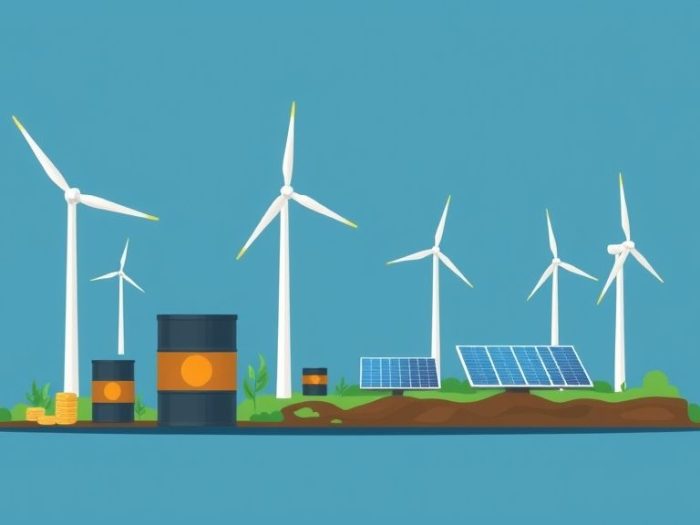As concerns about climate change grow, many investors are seeking to align their
portfolios with their values by excluding fossil fuel companies. Building a completely
fossil-free investment portfolio is not only ethically sound but can also offer
potential financial benefits. This article provides a guide on how to construct such a
portfolio.
Understanding Fossil Fuel Divestment
Fossil fuel divestment involves removing investments in companies that extract, refine,
or transport fossil fuels (coal, oil, and natural gas) from your investment portfolio.
Why Build a Fossil-Free Portfolio?
- Ethical Considerations: Align investments with concerns about climate change and environmental damage.
- Financial Risk: Mitigate exposure to the potential financial risks associated with the decline of the fossil fuel industry.
- Investment Opportunities: Invest in the growing renewable energy and sustainable sectors.
Steps to Build a Fossil-Free Investment Portfolio
1. Assess Your Current Holdings
Review your existing investment portfolio to identify any holdings in fossil fuel
companies.
- Stocks: Check your stock holdings for companies involved in oil and gas exploration, coal mining, or pipeline construction.
- Mutual Funds and ETFs: Examine the holdings of your funds to determine their exposure to fossil fuels.
- Bonds: Some corporate bonds may be issued by fossil fuel companies.
2. Define Your Fossil-Free Criteria
Establish clear criteria for what constitutes a “fossil-free” investment. This may include:
- Excluding all companies that derive any revenue from fossil fuels.
- Excluding only companies with significant involvement in fossil fuel extraction.
- Setting thresholds for revenue percentage from fossil fuels.
3. Identify Fossil-Free Investment Options
Explore investment options that align with your fossil-free criteria:
a. Fossil-Fuel-Free Funds
Many mutual funds and ETFs (Exchange-Traded Funds) are specifically designed to exclude
fossil fuel companies.
- ESG Funds: Environmental, Social, and Governance (ESG) funds often exclude fossil fuels.
- Clean Energy ETFs: ETFs that focus on renewable energy companies.
- Green Bond Funds: Funds that invest in bonds financing environmentally friendly projects.
b. Individual Stocks
Invest in individual companies that operate in sectors like:
- Renewable energy (solar, wind, hydro)
- Electric vehicles
- Sustainable agriculture
- Energy efficiency
4. Diversify Your Portfolio
Diversification is crucial, even within a fossil-free portfolio. Spread your investments
across different sectors and asset classes to reduce risk.
5. Monitor and Adjust
Regularly monitor your portfolio to ensure it remains aligned with your fossil-free
criteria and adjust as needed.
Challenges and Considerations
- Defining “Fossil-Free”: There can be varying definitions of what constitutes a fossil-free company.
- Data Availability: It can be challenging to get precise data on fossil fuel involvement for all companies.
- Performance: While ESG and clean energy investments are growing, their performance may vary compared to the broader market.
- Expense Ratios: Some ESG funds may have higher expense ratios.
Conclusion
Building a completely fossil-free investment portfolio is a way to align your investments
with your values and contribute to a more sustainable future. By carefully assessing
your current holdings, defining your criteria, and exploring fossil-free investment
options, you can construct a diversified portfolio that reflects your commitment to a
cleaner world.
Related Keywords
Fossil-free investing, divestment, ESG investing, sustainable investing, ethical
investing, clean energy stocks, renewable energy ETFs, green bonds, socially
responsible investing, climate change investing.
Frequently Asked Questions (FAQ)
1. What is fossil fuel divestment?
Fossil fuel divestment involves removing investments in companies that extract,
refine, or transport fossil fuels (coal, oil, and natural gas) from your
investment portfolio.
2. Why would someone build a fossil-free portfolio?
Reasons include ethical concerns about climate change, mitigating financial
risks associated with the decline of the fossil fuel industry, and investing
in renewable energy opportunities.
3. What are the first steps to building a fossil-free portfolio?
The first steps are to assess your current holdings and identify any stocks,
mutual funds, or bonds that are linked to fossil fuel companies.
4. What criteria should I use to define “fossil-free”?
You can define “fossil-free” based on your values, which might involve
excluding all companies with any fossil fuel revenue or only those with
significant extraction activities.
5. What are fossil-fuel-free funds?
Fossil-fuel-free funds are mutual funds or ETFs that specifically exclude
companies involved in the fossil fuel industry.
6. What are ESG funds?
ESG (Environmental, Social, and Governance) funds consider a company’s
environmental and social impact, and often exclude fossil fuels as part of
their criteria.
7. What are green bond funds?
Green bond funds invest in bonds that finance environmentally friendly
projects, such as renewable energy or energy efficiency initiatives.
8. What sectors should I consider for individual stock investments?
Consider investing in individual companies in sectors like renewable energy,
electric vehicles, sustainable agriculture, and energy efficiency.
9. Is a fossil-free portfolio less diversified?
A fossil-free portfolio can be diversified, but it requires careful planning
to ensure you’re spread across different sectors and asset classes.
10. Are there any challenges to building a fossil-free portfolio?
Challenges include defining what constitutes “fossil-free,” obtaining precise
data on company involvement, and potential performance differences compared to
the broader market.



